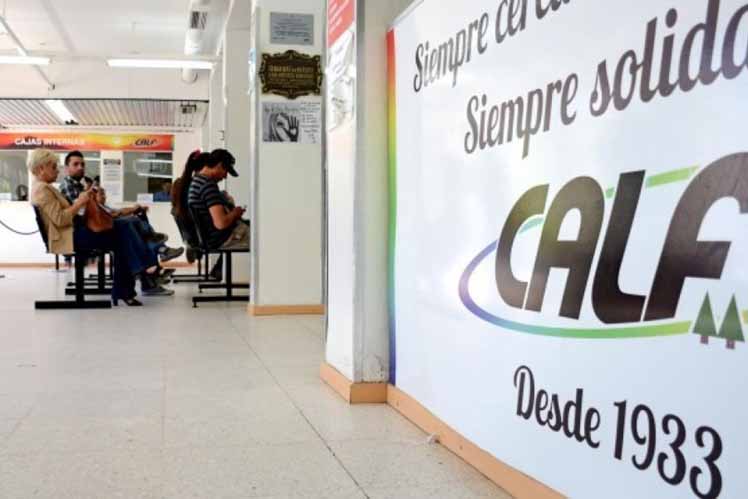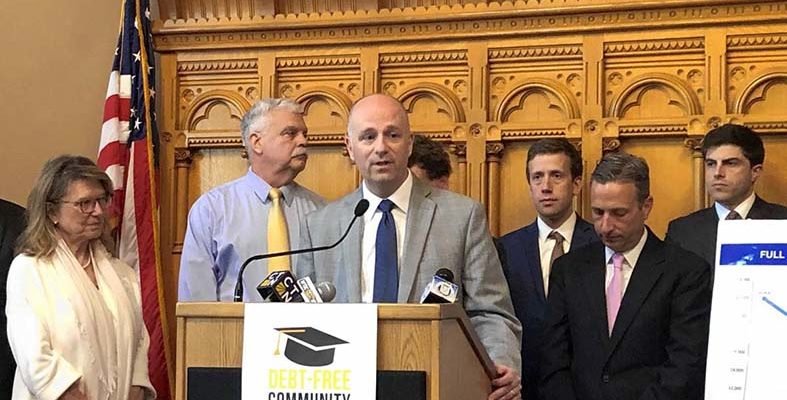HARTFORD — The debt-free community college program that is part of the new state budget being acted on Tuesday will cost up to $8.1 million in the first year, according to the state Office of Fiscal Analysis.
Supporters, however, hailed it as an investment in the future of Connecticut.
“This pathway to a debt-free community college empowers students to gain the skills they need to fuel our state’s economy,” said State Sen. Will Haskell, D-Westport, a co-chair of the legislature’s higher education committee and a champion of the legislation.
The plan, which would go into effect in the fall of 2020, will allow first-time college students to earn up to 72 college credits without incurring debt.
It is not immediately clear how many students would be eligible for the program but it is expected it will boost enrollment at the state’s 12 community colleges. Enrollment has been declining for some time.
Final legislative approval was delivered late Tuesday when the Senate voted 20 to 16 on the state budget. The budget package passed the House late Monday.
State Senate President Pro Tempore Martin Looney, D-New Haven, said the program will not only take a bite of student debt — Connecticut has the third-highest accumulated student loan debt in the country — but will increase the number of students who not only go to college but leave with a degree.
“We think it will result in an increase in the number of students who ultimately complete not only an associates degree but a bachelors degree afterwards,” Looney said. “That is critically important for the future of the state of Connecticut.”
Paul Broadie II, who serves as president at both Bridgeport’s Housatonic Community College and Gateway Community College in New Haven, applauded the legislature’s acknowledgment of the value of the community college system.
“Most importantly, while promoting college attendance and access, this has the potential to greatly benefit those middle class families who often fall short of receiving financial aid,” said Broadie. “As more individuals access higher education, the economic impact to the state and our workforce will be amplified.”
To be eligible, a student must live in the state, have graduated from a public or private Connecticut high school and be enrolled as a full-time college student. In college, they have to keep up their grades. They could be aiming for either an associate’s degree or a certificate program. If financial aid already covers a student’s tuition costs, the state program can be applied to books or living expenses. The amount was not specified.
Haskell said consideration was given to putting an income limit on eligibility but in the end decided to keep it simple and make it universal.
“In my view, it is a small price to pay if we increase the number of graduates,” Haskell said.
State Sen. Bob Duff, D-Norwalk, said the idea is to position more state residents to be prepared to fill the state’s growing number of advanced manufacturing and technical jobs.
“This is a great investment,” Duff said.
Rep. Gregory Haddad, D-Mansfield, the higher education committee’s other co-chair, said the new program could fill thousands more seats in community colleges around the state. That would reverse several years of declining state enrollment at state colleges.
Community college currently enrolls about 48,000 full and part time students. As many as 60 percent already have financial aid that essentially allows them to go for free.
Officials from the Board of Regents estimate as many as 2,310 more students in the first year could be receiving a college education without paying tuition or fees.
Leigh Appleby a spokesman for the Board of Regents, said the system has worked closely with members of the Higher Education Committee and shared insight on how to make a debt-free college program workable.
Officials acknowledge it is likely to further reduce enrollment at the state’s regional universities at first as more students decide to start their four-year college experience at community colleges because it is “free.”
Still, State Sen. Catherine Osten, D-Norwich, said the end result will be more federal Pell grants that funnel through the state and more students who go to college, finish college, get jobs and stay in Connecticut.
“This makes good sense,” Osten said Tuesday on the Senate floor.
Not everyone agreed. A frustrated State Sen. Tony Hwang, R-Fairfield, argued that the concept bypassed the process to get into the budget.
“We talked about the idea of debt free college, we debated it …. presto it appears in this budget with an entirely different funding mechanism,’ Hwang said.
The Democrat plan is to offset some of the increased cost when more students attend college, bringing with them other forms of financial aid.
The rest would be made up at least partially with anticipated online lottery revenues to the state. If the governor finds that the online offering is not feasible, the cost would come from budget adjustments, legislative leaders said.
Hwang, however, argues that the online gambling system is not vetted or approved. He worries the state is promising something it won’t be able to deliver.
Connecticut is far from the first state to offer free college programs. As many as 20, from New York to Oregon, offer some kind of assistance to ease student loan debt and increase college-educated populations.
It is anticipated the state would spend up to $2 million to market the program and up to $6.1 million to provide grants for students to cover the difference between tuition and other financial aid.
The program would begin in the fall of 2020. The bill requires the Board of Regents for Higher Education, which oversees community colleges, to establish and run the program, providing eligible students with awards that cover the unpaid portion of tuition and fees beyond scholarships, grants, and federal, state, and institutional aid awarded to the student.



